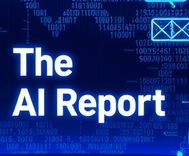Autonomous AI Agents: Capabilities, Challenges, and the Future Landscape

The AI Report
Daily AI, ML, LLM and agents news
The field of Artificial Intelligence is on the cusp of a profound transformation, driven by the emergence of autonomous AI agents. These sophisticated entities are no longer confined to simple, pre-programmed tasks. Instead, they possess the remarkable ability to perceive their environment, make independent decisions, and act proactively to achieve complex goals. As we stand on the precipice of this AI evolution, understanding the capabilities, inherent challenges, and the sprawling future landscape of autonomous AI agents is paramount for individuals, businesses, and society as a whole.
This deep dive will explore what truly defines an AI agent's autonomy, the technological bedrock upon which it's built, its transformative use cases, the critical hurdles we must overcome, and the exhilarating, albeit complex, future it promises.
Defining Autonomy: Beyond Automation
At its core, autonomy in AI refers to an agent's capacity for self-governance and independent action. But what does this truly entail in practice?
- Goal-Oriented Action: Autonomous agents are designed with specific objectives. They don't just execute commands; they strategize and adapt their actions to achieve these overarching goals.
- Perception and Interpretation: They can sense and interpret information from their environment, whether it's digital data, sensor inputs, or human language. This allows them to understand context and react accordingly.
- Decision-Making and Planning: Based on their perception and goals, agents can make independent decisions, formulate plans, and adapt those plans as circumstances change. This involves a degree of \"thinking\" or sophisticated reasoning.
- Self-Correction and Learning: A key aspect of advanced autonomy is the ability to learn from experiences, identify errors, and adjust their behavior to improve future performance. This can range from simple error correction to more complex reinforcement learning.
- Initiative and Proactiveness: Unlike traditional automated systems that wait for input, autonomous agents can take initiative, identify opportunities, and act proactively without explicit human direction.
The spectrum of autonomy is wide, ranging from simple task automation with limited decision-making to highly sophisticated agents capable of complex problem-solving and long-term planning. As LLMs continue to expand their contextual understanding and reasoning abilities, the sophistication of these agents will only grow.
The Technological Convergence: Powering Autonomous Agents
The rise of autonomous AI agents is not the work of a single breakthrough but rather the convergence of several cutting-edge technologies. At the forefront of this convergence are:
- Large Language Models (LLMs): The foundational intelligence of many modern AI agents lies in LLMs. Their ability to understand, generate, and reason with human language is critical for interpreting requests, planning actions, and communicating outcomes. The increasing size of context windows in LLMs allows agents to maintain a deeper understanding of ongoing tasks and past interactions.
- Perception Modules: For agents operating in physical or multimodal environments, robust perception systems are essential. This includes computer vision for understanding visual data, natural language processing (NLP) for comprehending text and speech, and sensor fusion for integrating data from various sources.
- Planning and Reasoning Engines: Beyond simply understanding, agents require sophisticated planning capabilities. This involves breaking down complex goals into smaller, actionable steps, anticipating potential obstacles, and devising strategies to overcome them. Techniques like Reinforcement Learning (RL) and advanced search algorithms are crucial here.
- Execution and Action Frameworks: Once a plan is formulated, agents need reliable mechanisms to execute actions. This could involve interacting with APIs, controlling robotic limbs, generating code, or manipulating digital interfaces. The seamless integration of LLM integration strategies is key to bridging the gap between intent and action.
- Memory and State Management: To operate effectively over time, agents need to maintain a memory of their past actions, observations, and learned knowledge. This allows for consistent behavior and the ability to build upon previous experiences.
The interplay between these components allows AI agents to move beyond simple task execution to more complex, goal-directed problem-solving.
Key Capabilities and Transformative Use Cases
The capabilities of autonomous AI agents unlock a vast array of practical applications across virtually every sector. Here are some prominent examples:
- Personalized Research Assistants: Imagine an agent that can not only search for information but also synthesize it, identify research gaps, draft outlines, and even conduct preliminary analyses, adapting its approach based on your feedback. This goes beyond basic \"AI Tools\" to a proactive research partner.
- Automated Customer Service and Support: Agents can handle complex customer queries, troubleshoot issues, personalize recommendations, and even proactively reach out to customers based on behavioral data, providing a more efficient and satisfying experience.
- Software Development and Debugging: Autonomous agents can assist in writing code, identifying and fixing bugs, optimizing performance, and even generating test cases, significantly accelerating the development lifecycle.
- Supply Chain and Logistics Optimization: Agents can monitor inventory levels, predict demand fluctuations, reroute shipments in real-time to avoid disruptions, and optimize delivery routes, leading to greater efficiency and cost savings.
- Scientific Discovery and Experimentation: In research settings, agents can design experiments, analyze vast datasets, identify patterns, and suggest new hypotheses, accelerating the pace of scientific breakthroughs.
- Content Creation and Management: From generating marketing copy and social media posts to editing videos and managing digital assets, autonomous agents can streamline creative workflows and assist in the personalized delivery of content.
- Financial Analysis and Trading: Agents can monitor market trends, analyze financial reports, identify investment opportunities, and execute trades with a degree of autonomy, all while adhering to predefined risk parameters.
These AI Agent Use Cases highlight the potential for autonomous agents to revolutionize how we work, learn, and interact with the digital and physical world.
Navigating the Challenges and Ethical Considerations
Despite the immense promise, the development and deployment of autonomous AI agents are fraught with significant challenges and critical ethical considerations that demand careful attention.
Technical Hurdles:
- Reliability and Robustness: Ensuring agents consistently perform as expected, especially in dynamic or unexpected environments, is a major technical hurdle. Errors can have significant consequences.
- Interpretability and Explainability: Understanding why an autonomous agent made a particular decision can be difficult, posing challenges for debugging, auditing, and building trust. This is a key aspect of Ethical AI Agent Development.
- Computational Demands: Running complex autonomous agents often requires substantial computational resources, making widespread deployment potentially expensive.
- Security Vulnerabilities: Autonomous agents, especially those with access to sensitive data or control systems, can become targets for malicious attacks, requiring robust security protocols.
Ethical Dilemmas and Societal Impact:
- Accountability and Responsibility: When an autonomous agent errs, who is ultimately responsible – the developer, the user, or the agent itself? Establishing clear lines of accountability is crucial.
- Bias and Fairness: Autonomous agents trained on biased data can perpetuate and amplify those biases, leading to unfair or discriminatory outcomes. Rigorous testing and mitigation strategies are essential.
- Control and Alignment: Ensuring that autonomous agents remain aligned with human values and intentions, especially as their autonomy increases, is a paramount concern. The \"alignment problem\" is a significant area of AI research.
- Job Displacement and the Future of Work: As AI agents become more capable, they have the potential to automate a wider range of tasks, raising questions about the future of employment and the need for reskilling initiatives.
- Privacy and Data Security: Autonomous agents often require access to vast amounts of data, raising concerns about individual privacy and the potential for misuse of personal information.
Addressing these challenges is not merely a technical exercise but a societal imperative. Open dialogue and collaboration are vital to ensure that the development of autonomous AI agents proceeds responsibly and ethically.
The Future Landscape: Evolution and Integration
The trajectory of autonomous AI agents points towards increasing sophistication, deeper integration into our daily lives, and a reimagining of human-AI collaboration. Looking ahead to Enterprise AI Solutions 2025 and beyond, several key trends will shape the landscape:
- Ubiquitous Integration: Autonomous agents will move from specialized applications to becoming integral components of operating systems, business processes, and personal devices, acting as intelligent assistants across various domains. * Enhanced Multimodality: Agents will seamlessly integrate and reason across different data types – text, images, audio, video – enabling more holistic understanding and interaction.
- Self-Improving and Self-Replicating Agents: Future agents may possess enhanced capabilities for self-improvement, learning new skills and even generating new agents or code with minimal human intervention.
- Advanced Human-AI Collaboration: The focus will shift from AI replacing humans to AI augmenting human capabilities. Agents will act as co-pilots, problem-solving partners, and creative collaborators, leading to increased productivity and innovation.
- Ethical Frameworks as a Foundation: As AI becomes more autonomous, the development and enforcement of robust ethical frameworks and regulatory guidelines will become even more critical, ensuring safety, fairness, and accountability.
- Specialized Agents for Niche Problems: We will see the rise of highly specialized autonomous agents tailored to solve specific, complex problems within industries like healthcare, climate science, and materials engineering. The future of AI is undeniably agentic. Understanding the foundational principles and current state of autonomous AI agents is the first step towards navigating this exciting and transformative era. By embracing responsible development and fostering a forward-looking perspective, we can harness the power of these intelligent entities to drive progress and shape a more efficient, innovative, and equitable future.
Internal Links:

The AI Report
Author bio: Daily AI, ML, LLM and agents news
